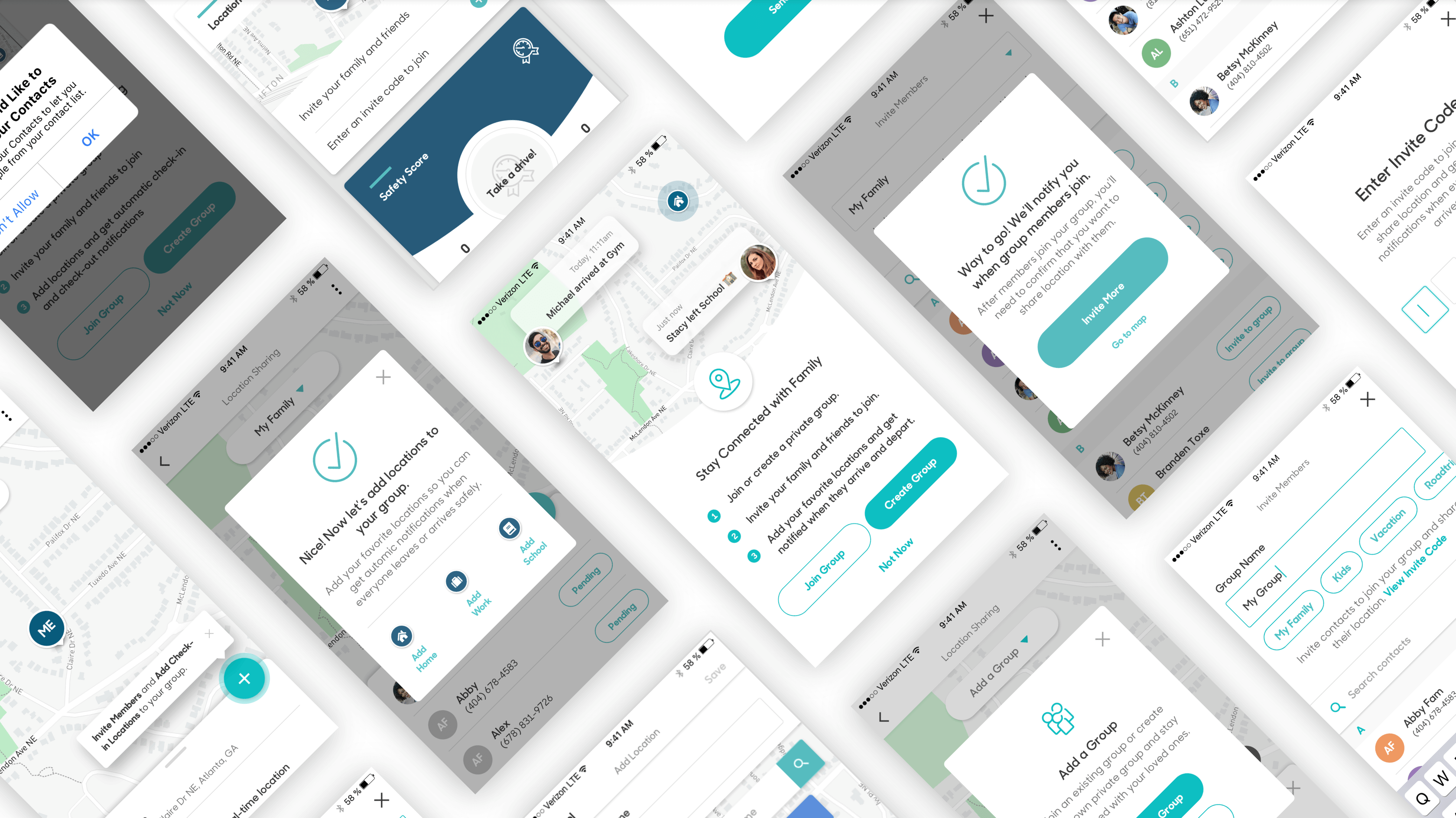
OVERVIEW
In addition to data from the Hum Vehicle Reader, the Hum App offers features that use phone-based location services. As the precursor to a new product launch, the Hum product team introduced another feature in the Hum App that uses phone-based location – known as Location Sharing. The introduction of the Location Sharing feature further highlighted issues that customers have with understanding the Hum App’s product offerings.
The Hum customer base struggled to understand that:
- The Hum App provides features that use both phone-based location and vehicle-based location (from the Vehicle Reader)
- The phone-based location features could be used by anyone even if they did not purchase the Hum Vehicle Reader
MY ROLE
I led the design of the Location Sharing feature. This included testing three versions of Location Sharing – Ad Hoc (time-based), Continuous, and Groups – and iterating upon the design based on stakeholder requirements and user feedback. In order to address the issues customers were experiencing, I proposed feature enhancements that would improve the onboarding flow to make it more intuitive, educate customers about the value/benefit of the feature, and clearly communicate how the feature works. I collaborated with the cross-functional team to iterate on the design and prioritize the enhancements.
METHODOLOGIES
Competitive Analysis, Sketching, Prototyping, Usability Testing, User Interviews
TOOLS
Sketch, InVision, UserTesting.com
DISCOVERY
After the release of the Location Sharing feature, I monitored the analytics to see the take rate for creating a group, inviting members, and adding locations; with the goal of identifying any areas of fallout.
From the analytics, I observed that a high percentage of users were opting for “Not Now” on the welcome screen to the feature and for those that did continue down the funnel to create a group, only one-third were saving the group and sending an invite.
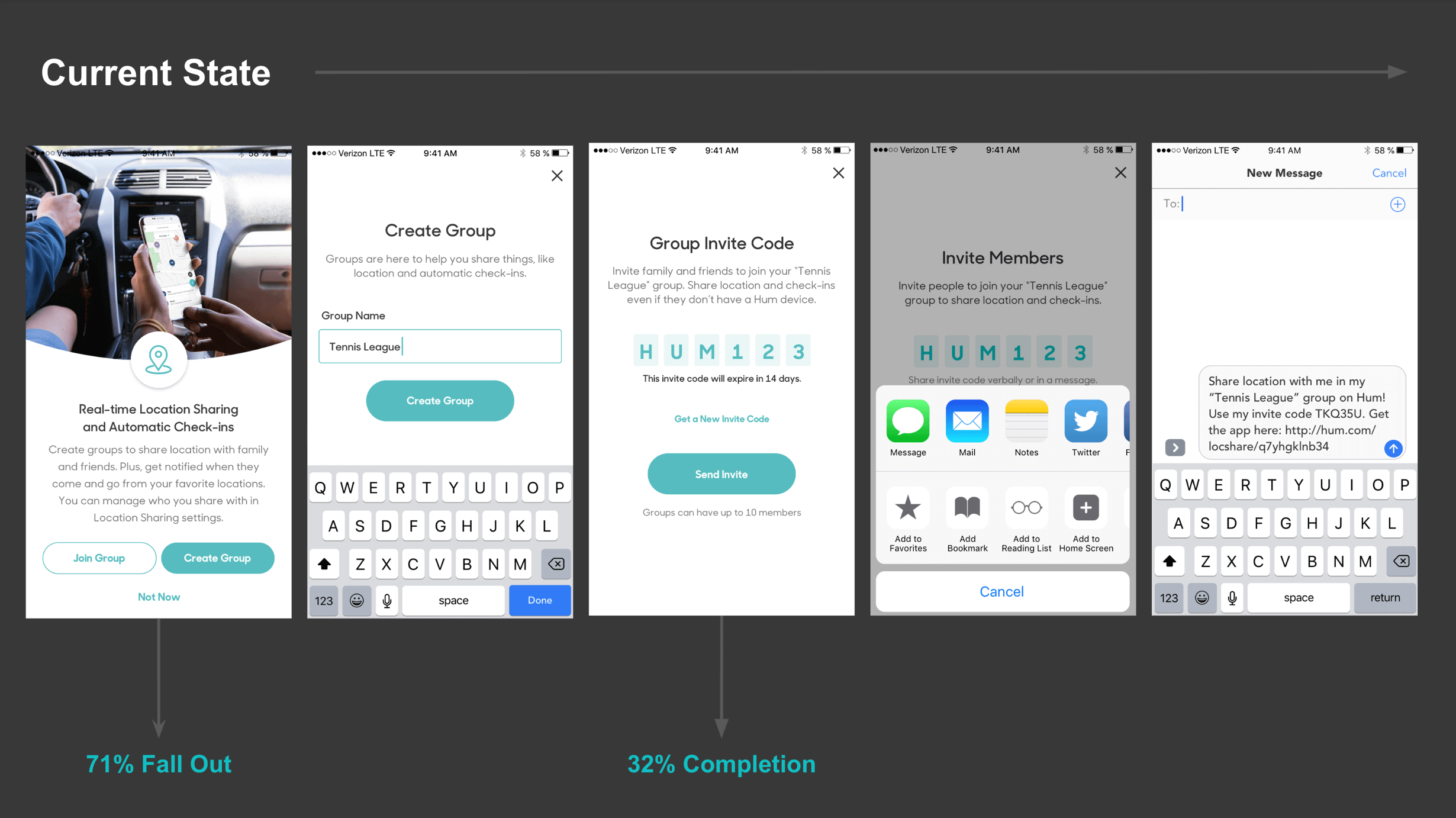
To dive deeper, I worked with the researcher on our team to conduct user interviews with customers who had created a group and invited at least one member to get a better understanding of their perception of the feature. Key insights from the research:
- Customers were confused by the difference between Vehicle Location and Location Sharing
- The majority thought they could only share location with others who had the Hum Vehicle Reader
- Customers did not understand why or how they would use Location Sharing
THE APPROACH
Introducing the Location Sharing feature added complexity to the product and further confused the customer base. To address these issues, I proposed several concepts aimed at answering the three primary questions that emerged from the research:
Awareness
What does Hum do? What is Location Sharing?
Value Prop
Why should I use Location Sharing?
Usability
How do I use Location Sharing?
CONCEPTS
The concepts were presented cross-functionally with input from research, product, and development.
Lead with Contacts
The current onboarding flow started with the user creating a group. Instead of creating a group first, the concept re-ordered the first-time user flow to start with inviting people. Additional enhancements in the concept included updating to the welcome screen to use people-focused language instead of group-focused, adding the contacts permission to allow users to select people to invite from their contacts, and including tutorials on how the feature works.
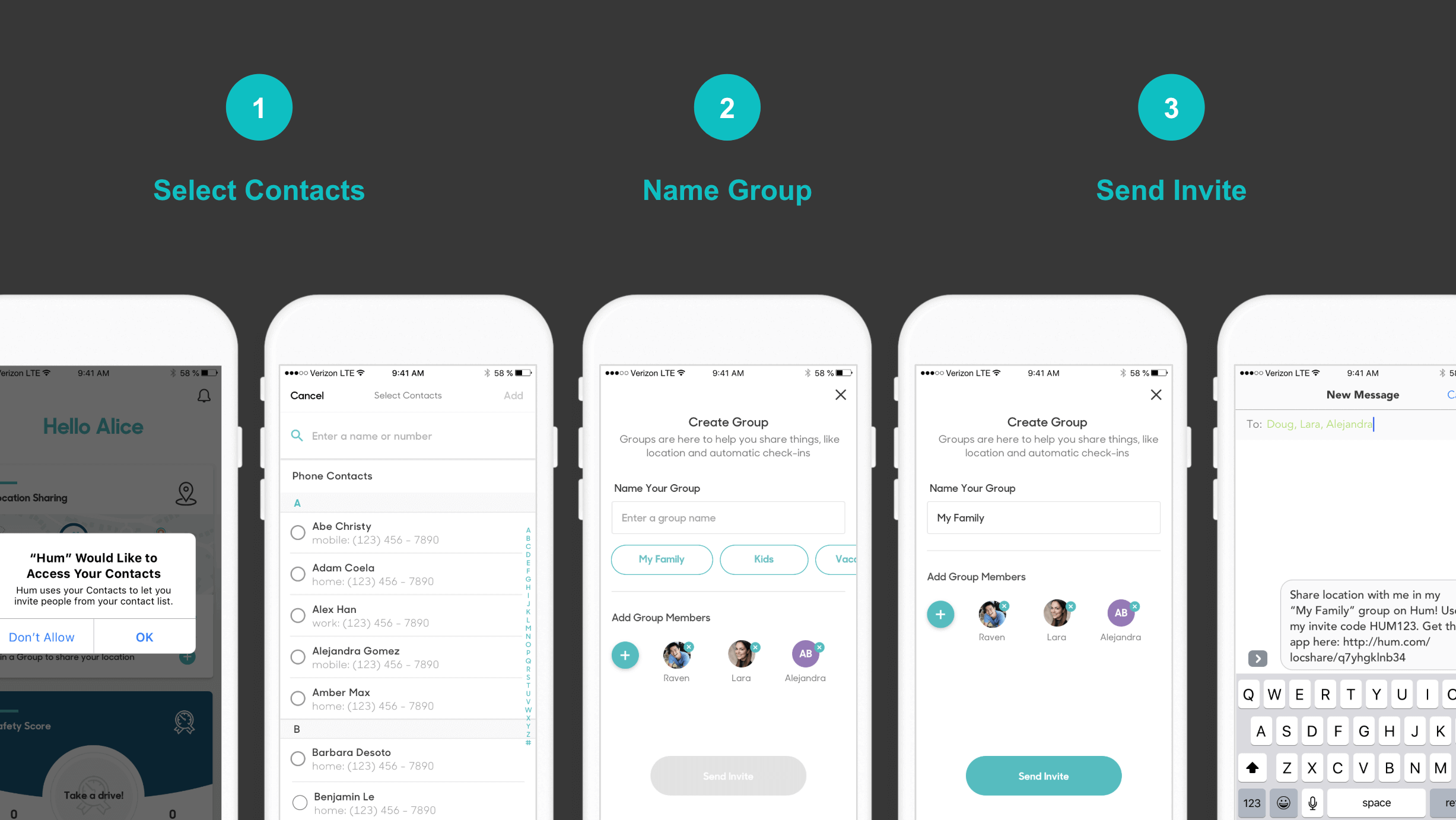
Combine People and Vehicles
The Location Sharing feature was added as a separate item in the app versus being integrated with current location offerings. As a result, the new feature made it harder to keep the overall design coherent and caused customer confusion. As the long-term goal was to include vehicles and people on the same map, a tabbed approach was presented to combine people and vehicles in the same area of the app as an incremental design change; while development worked to solve for latency issues that may arise with one map. Having the features in the same area right next to each other would help create a cognitive connection and minimize the confusion customers experienced with distinguishing Vehicle Location and Location Sharing.
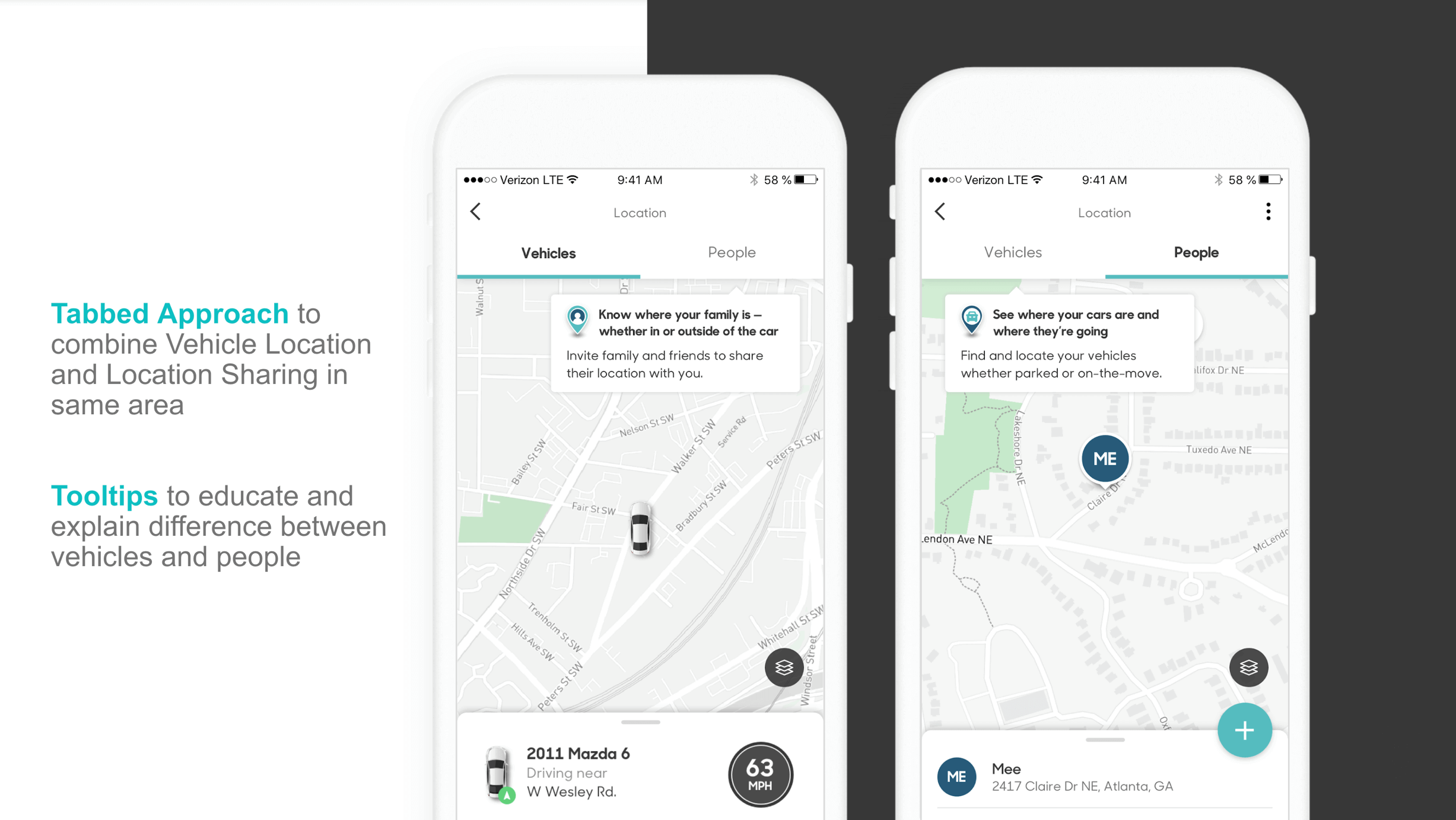
Communication Plan
In order to further educate the customer, a communication plan was presented to target customers based on their interaction with the feature which included a combination of emails and push messages.
Feature announcements to users who have not engaged with Location Sharing
Emails to users who have created groups to further explain feature benefits
Feature series highlighting value prop in monthly newsletter to customer base
TESTING
Of the above concepts, Leading with Contacts and the Communication Plan were greenlit by Product Management. I proceeded to flesh out the first-time user flow for the testing prototype and work with the copywriter to fine-tune the messaging. In consult with development, I learned that we could only populate one contact at a time to send a message; which impacted how I handled selecting contacts and sending invites. I made these revisions and launched the user testing sessions.
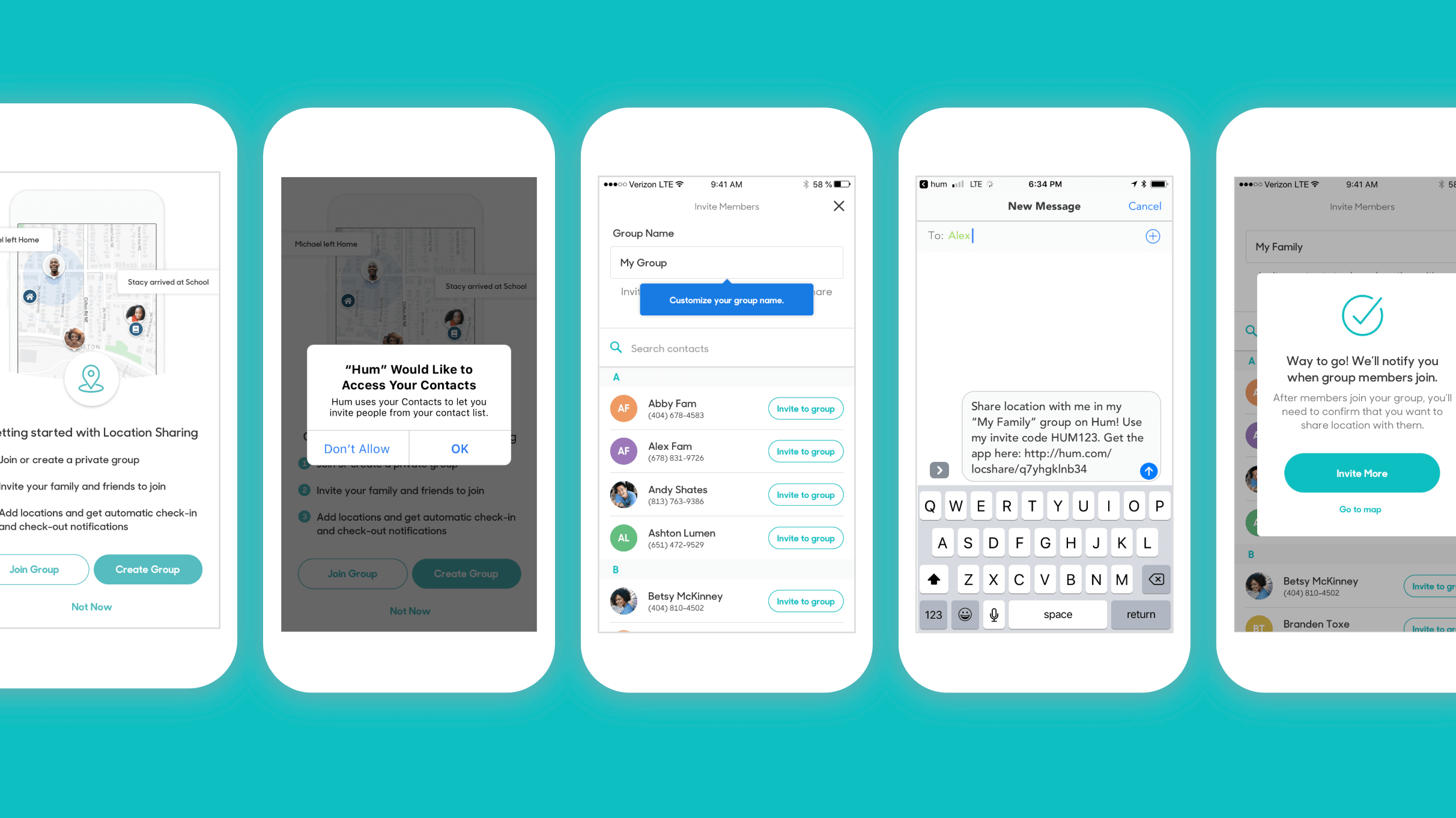
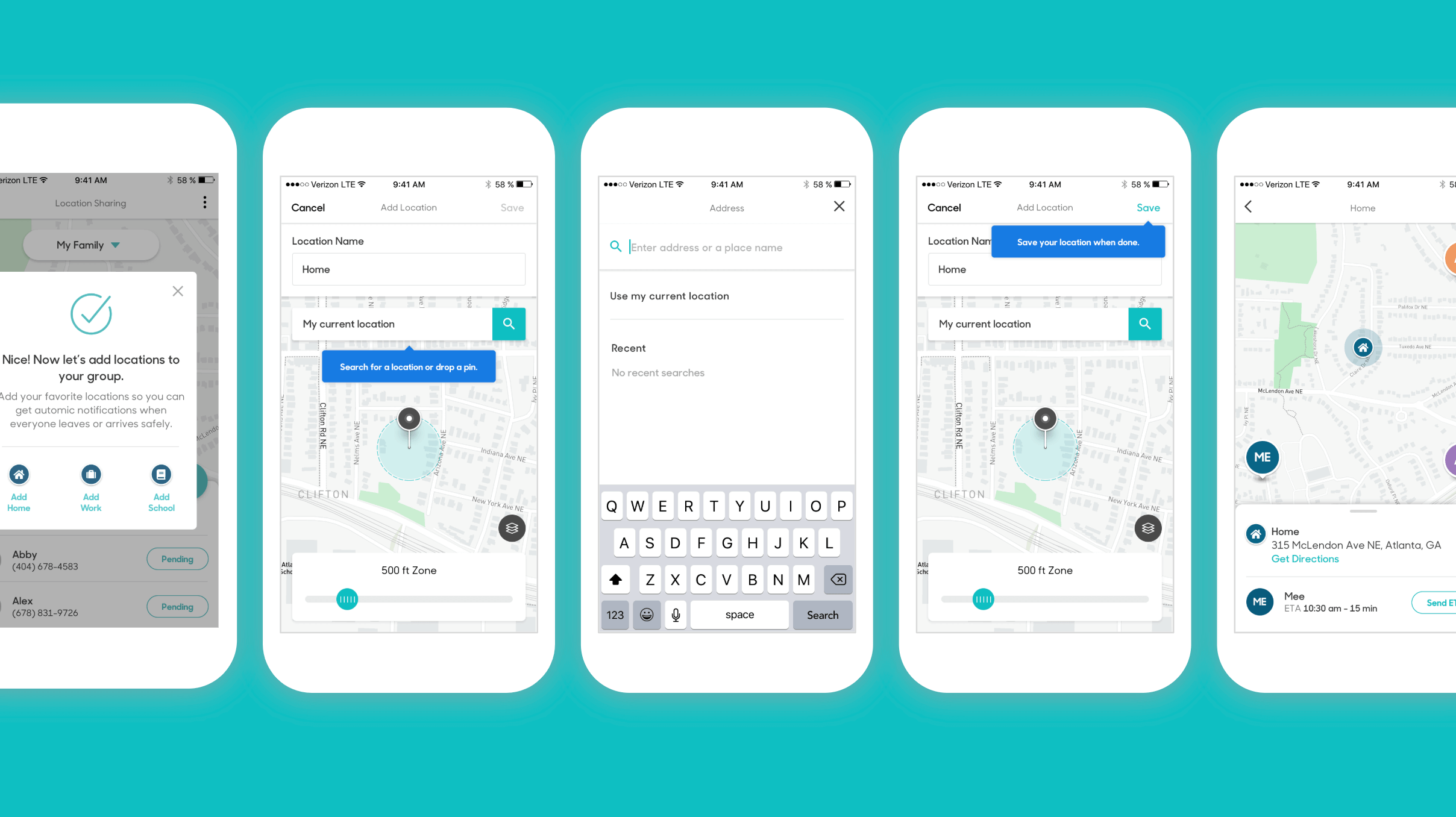
I used Task Analysis and Experience Scoring to evaluate and rate user understanding, usability, and perceived value of the revised onboarding experience for Location Sharing.
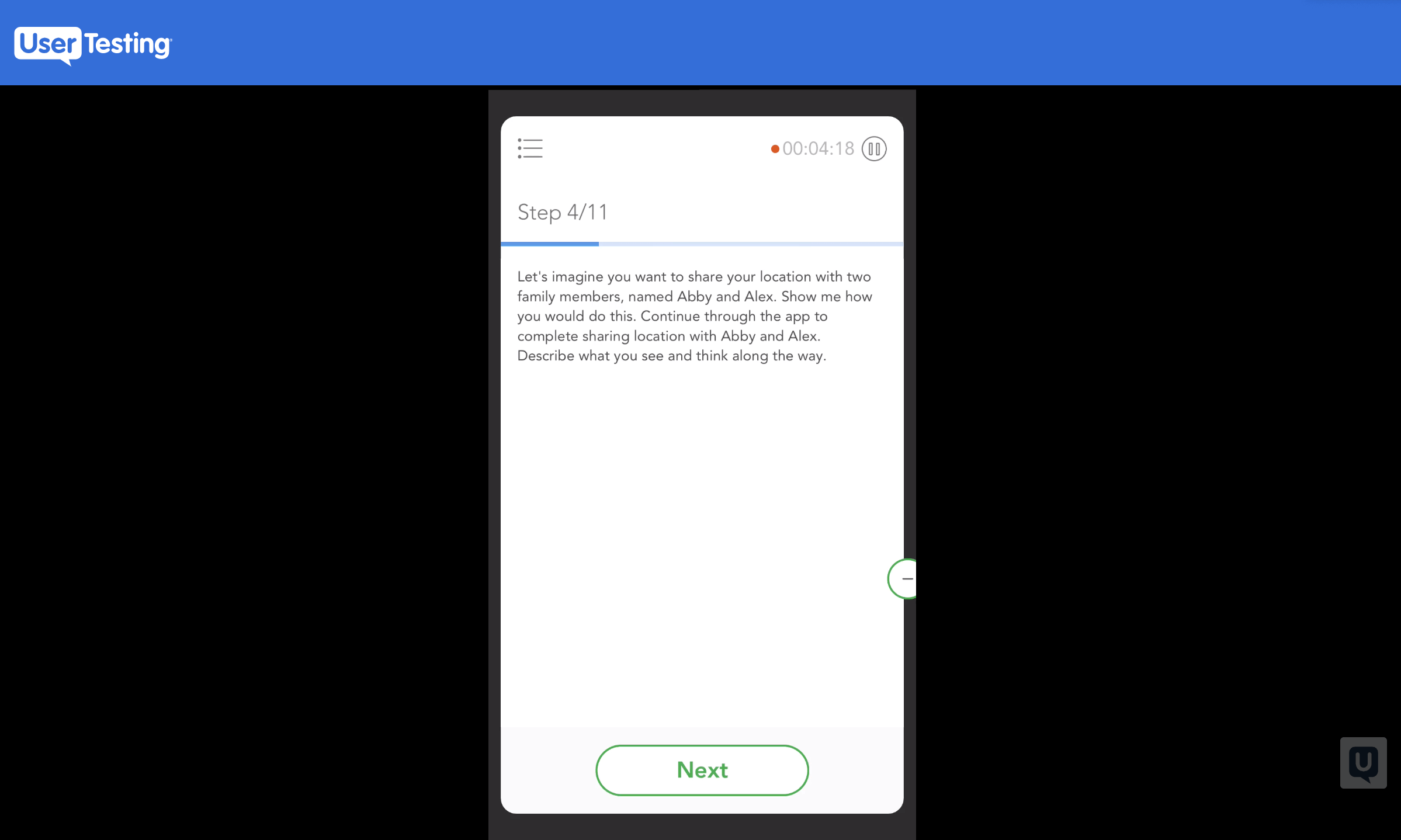
Participants were asked to complete the following tasks:
1. Share location with two family members.
2. Add home as a location.
After task completion, participants were asked to rate the difficulty of the task and describe their understanding of the feature via verbal and written responses.
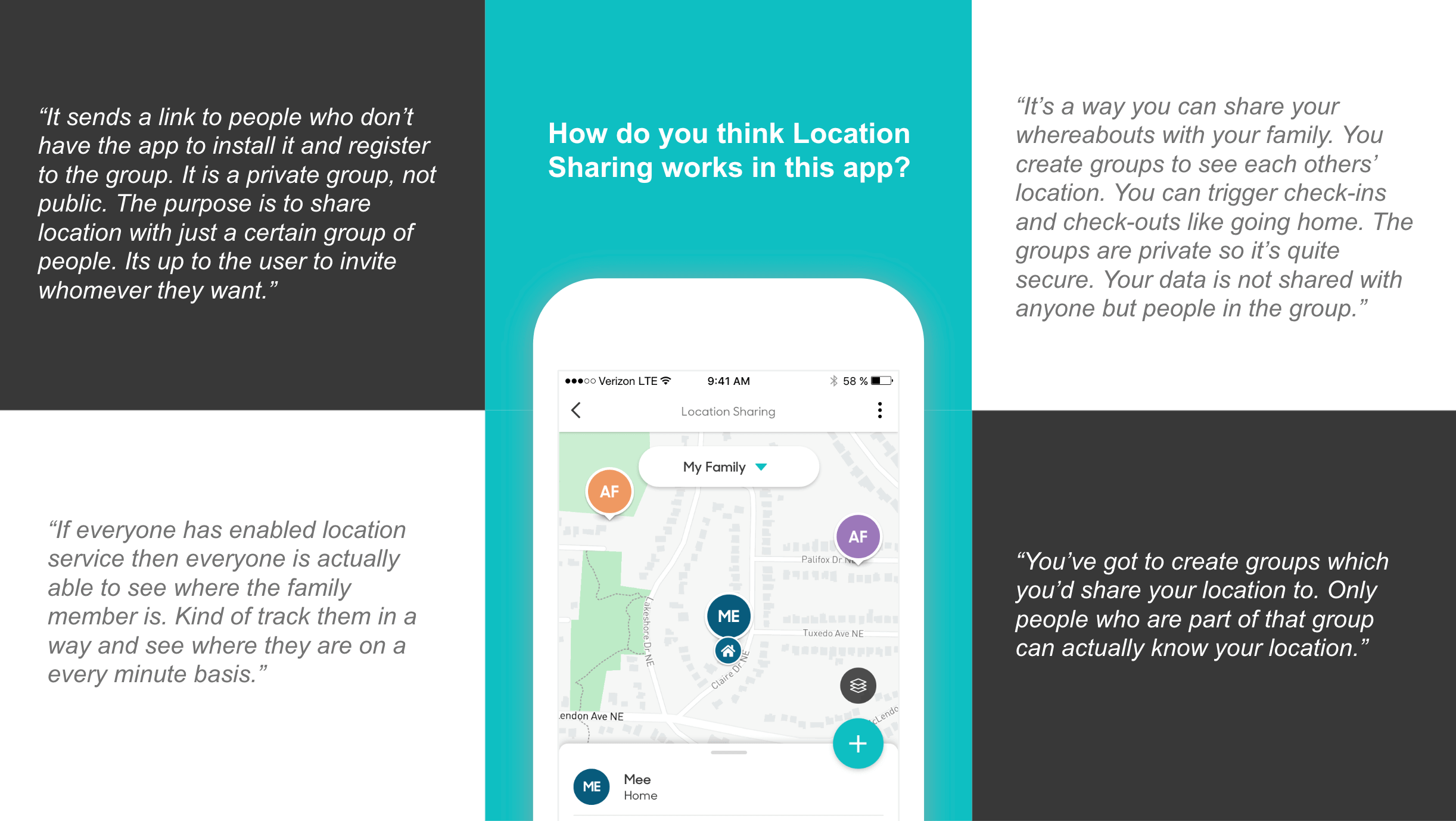
ITERATION
Based on findings from the testing, I iterated on the design to fine-tune the user experience and made other enhancements from backlogged items.
In addition to the new onboarding flow, the revised experience included: pulsing micro-interaction to draw attention to the fab button, all core actions accessible from the fab (add group, invite members, add locations), auto-fill selections for group and location names, default settings for notifications to simplify preferences, IA changes to bring management functions higher, branded invitation message, and copy updates.

RESULTS
A combination of experience bloat and technical debt hindered the initial release of the Location Sharing feature. The team realized that we needed to position Location Sharing differently within Hum in order to educate our customers about how the feature works and to clearly communicate its value.
In doing so, fall out during the Location Sharing onboarding flow improved significantly. Users selecting “Not Now” to skip the first-time user flow decreased by 25% and users proceeding to create a group and invite members increased from 32% to 71%. In addition, users adding locations to their groups increased from 15% to 41%.
